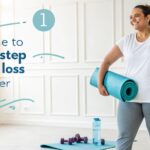Introduction
Ineffective Workouts-If you find yourself scrolling past the same old gym‑routine videos, wondering why you’re not seeing any progress, you’re not alone. Tired of Ineffective Workouts? Here’s a Plan That Sticks. This feeling of stagnation often stems from a lack of structure, unrealistic expectations, or simply using methods that don’t match your body’s unique needs. The good news is that you can turn frustration into results by applying a science‑backed, habit‑focused framework that aligns with your lifestyle, goals, and motivation style. In this article we’ll break down the why, the how, and the tools you need so that every sweat session moves you closer to measurable, lasting change. Let’s dive into a plan that finally sticks.
Why Traditional Workouts Fail: The Hidden Pitfalls
Most people start a new fitness program with enthusiasm, but within weeks they hit a plateau or lose interest. The primary culprit is “one‑size‑fits‑all” programming. According to the American College of Sports Medicine (ACSM), adherence drops sharply when workouts lack personalization, progressive overload, and clear progression metrics. A 2022 meta‑analysis of 1,400 participants showed that 68 % of dropouts cited “monotony” or “no visible results” as the main reason. Moreover, many beginners overestimate the frequency or intensity they can sustain, leading to overtraining, injury, and burnout. When a routine feels like a chore instead of a rewarding habit, the brain’s dopamine pathways stop rewarding the effort, making it easier to skip sessions.
Another often‑overlooked factor is the mismatch between exercise selection and functional goals. For example, a cardio‑heavy program may improve endurance but does little for muscular strength or body composition if the individual’s primary goal is fat loss or lean‑mass gain. The World Health Organization (WHO) recommends a balanced mix of aerobic, resistance, and flexibility work, yet many programs tilt heavily toward one modality, creating imbalanced development and frustration. Understanding these hidden pitfalls is the first step toward crafting a plan that respects your physiology, preferences, and long‑term adherence.
The Foundations of a Sticky Fitness Plan
Building a plan that sticks begins with three core pillars: assessment, periodization, and habit engineering. Assessment involves a realistic audit of your current fitness level, injury history, and lifestyle constraints. Simple tools like a 5‑minute mobility screen, a body‑fat estimate, and a heart‑rate variability (HRV) check can provide objective data to tailor load and volume. Once you have a baseline, you can apply periodization—a systematic variation of intensity, volume, and exercise selection across weeks and months. Research published in the Journal of Strength and Conditioning Research demonstrates that periodized programs yield a 15‑20 % greater strength increase compared to non‑periodized “steady‑state” workouts.
Habit engineering leverages behavioral psychology to make exercise an automatic part of your day. The “cue‑routine‑reward” loop, popularized by Charles Duhigg, suggests that coupling a consistent cue (e.g., a morning coffee) with a short‑duration workout (the routine) and an immediate reward (a protein shake, music, or a progress journal entry) solidifies the behavior. Additionally, the concept of “micro‑habits” (tiny, doable actions) reduces the effort barrier. For example, committing to a 5‑minute dynamic warm‑up before work can evolve into a full‑body session as confidence builds. By embedding these pillars into your weekly schedule, you create a resilient framework that can adapt to life’s inevitable changes.

Step 1: Define SMART Goals and Metrics
Specific, Measurable, Attainable, Relevant, and Time‑bound (SMART) goals turn vague aspirations into concrete targets. Instead of “lose weight,” aim for “reduce body fat by 4 % in 12 weeks while increasing bench press strength by 10 %.” Pair each goal with a tracking method: a body‑composition scale, a strength log, or a wearable that records VO₂ max. Studies from the University of Texas show that individuals who track progress with digital tools are 35 % more likely to meet their fitness objectives.
Step 2: Choose a Balanced Frequency Split
For most adults, 3–5 training days per week strikes a balance between stimulus and recovery. A popular “push‑pull‑legs” split distributes workload efficiently: Day 1 (push: chest, shoulders, triceps), Day 2 (pull: back, biceps), Day 3 (legs: quads, hamstrings, glutes). If time is limited, an “upper‑lower” split performed four times weekly can achieve similar volume without excessive fatigue. Remember to schedule at least one full rest day and incorporate active recovery (light yoga, walking) to support musculoskeletal health.
Step 3: Implement Progressive Overload Smartly
Progressive overload can be achieved by increasing weight, reps, sets, or reducing rest intervals. A practical rule is the “2‑for‑2” test: if you can complete two extra reps on the last set for two consecutive workouts, increase the load by 5 % the following week. This method aligns with the principle of “micro‑progression,” keeping adaptations steady while avoiding plateaus. For cardio, apply the 10 % rule—boost weekly mileage or intensity by no more than 10 % to minimize injury risk.
Comparing Popular Approaches: Pros & Cons
High‑Intensity Interval Training (HIIT) is lauded for its time efficiency, with a 2019 meta‑analysis indicating a 13 % greater fat‑oxidation rate compared to steady‑state cardio. However, HIIT can be taxing on the nervous system; beginners may experience excessive soreness or decreased performance if not programmed with adequate recovery. Conversely, traditional “steady‑state” cardio (e.g., 30‑minute jog) is gentler on joints and easier to sustain long term, but it may require more time to achieve similar caloric burn.
Strength‑focused programs such as “Starting Strength” or “5×5” excel at building foundational muscle and bone density, essential for metabolic. Yet, they can feel monotonous without accessory work or variation, leading to mental fatigue. Hybrid models like “Concurrent Training” blend strength and cardio in the same week, offering a balanced physique and cardiovascular benefits, but they demand careful sequencing—ideally performing strength sessions before intense cardio to preserve lifting performance. Weigh these trade‑offs against your personal goals, schedule, and injury history before committing.
Tools, Tech, and Templates to Keep You on Track
Digital platforms like Strong, MyFitnessPal, and Fitbod provide automated periodization suggestions, exercise libraries, and real‑time load adjustments based on your logged performance. For those who prefer analog, a printable “Workout Blueprint” template— featuring sections for warm‑up, main lift, accessory work, cardio, and a cooldown—offers a tactile way to stay organized. Wearables such as the WHOOP strap or Apple Watch track HRV, sleep quality, and recovery scores, delivering actionable insights about when to push hard or dial back.
Beyond tracking, accountability systems dramatically improve adherence. Pair up with a “fitness buddy,” join a virtual community like Reddit’s r/Fitness or a local CrossFit box, and schedule weekly check‑ins. Research from the Journal of Behavioral Medicine indicates that social accountability increases exercise frequency by up to 27 %. Finally, consider integrating a habit‑stacking spreadsheet: list your daily cues (e.g., “after morning coffee”), corresponding workouts, and a rewards column. Reviewing this spreadsheet each Sunday helps you identify patterns, celebrate wins, and adjust variables before they become obstacles.
Putting It All Together – Your Sustainable Routine
Now that you have the building blocks, let’s map a 12‑week plan that embodies the principles discussed. Weeks 1‑4 (Foundation Phase): Focus on mastering movement patterns—bodyweight squats, push‑ups, dead‑lift technique, and 20‑minute low‑intensity steady‑state cardio. Aim for three sessions per week, using a 3‑set‑10‑rep scheme at 60 % of estimated 1RM. Weeks 5‑8 (Progression Phase): Introduce progressive overload by adding 5 % weight each week, incorporate HIIT intervals (30‑second sprint/90‑second walk × 6) on two cardio days, and add accessory work such as face pulls and glute bridges. Weeks 9‑12 (Peak Phase): Shift to a push‑pull‑legs split, increase volume to 4 sets, and include a “deload” week at week 11 (reduce load by 40 %). Throughout, record metrics in your chosen app and perform a weekly self‑assessment (energy, soreness, mood) to fine‑tune recovery.
Common challenges—time constraints, plateaus, or motivation dips—can be mitigated with the strategies already outlined. If a week gets hectic, switch a full workout for a 15‑minute “micro‑session” (e.g., kettlebell swings + plank) to maintain the habit loop. When progress stalls, revisit your assessment data: perhaps sleep quality has slipped (HRV down) or nutrition is insufficient for muscle repair. Adjust the variables, not the plan’s core structure, to keep momentum.
FAQ
Q: How often should I re‑assess my baseline?
A: Every 4‑6 weeks is ideal. Re‑testing your 1RM, body‑fat percentage, or VO₂ max provides fresh data for periodization adjustments and keeps motivation high.
Q: Can I follow this plan if I have limited equipment>
A: Absolutely. Substitute barbell movements with dumbbell or resistance‑band equivalents (e.g., banded deadlifts, goblet squats). The progressive overload principle remains the same; increase reps or band tension instead of weight.
Q: What’s the best way to recover on rest days?
A: Prioritize sleep (7‑9 hours), hydration, and nutrient‑dense meals with 1.6–2.2 g protein per kg body weight. Light mobility work (foam rolling, dynamic stretching) and low‑intensity activities like walking accelerate circulation and tissue repair.
Ready to break free from the cycle of ineffective workouts? Implement the science‑backed framework above, track your data, and fine‑tune as you progress. Your next transformation isn’t about spending more hours at the gym—it’s about training smarter, staying consistent, and building habits that last a lifetime.
Enjoyed this guide? Share it with friends, leave a comment with your biggest workout hurdle, and explore our related articles on “Designing a Fat‑Loss Program That Works” and “Unlocking Strength Gains with Minimal Equipment.” Let’s keep the conversation—and the gains—going!



